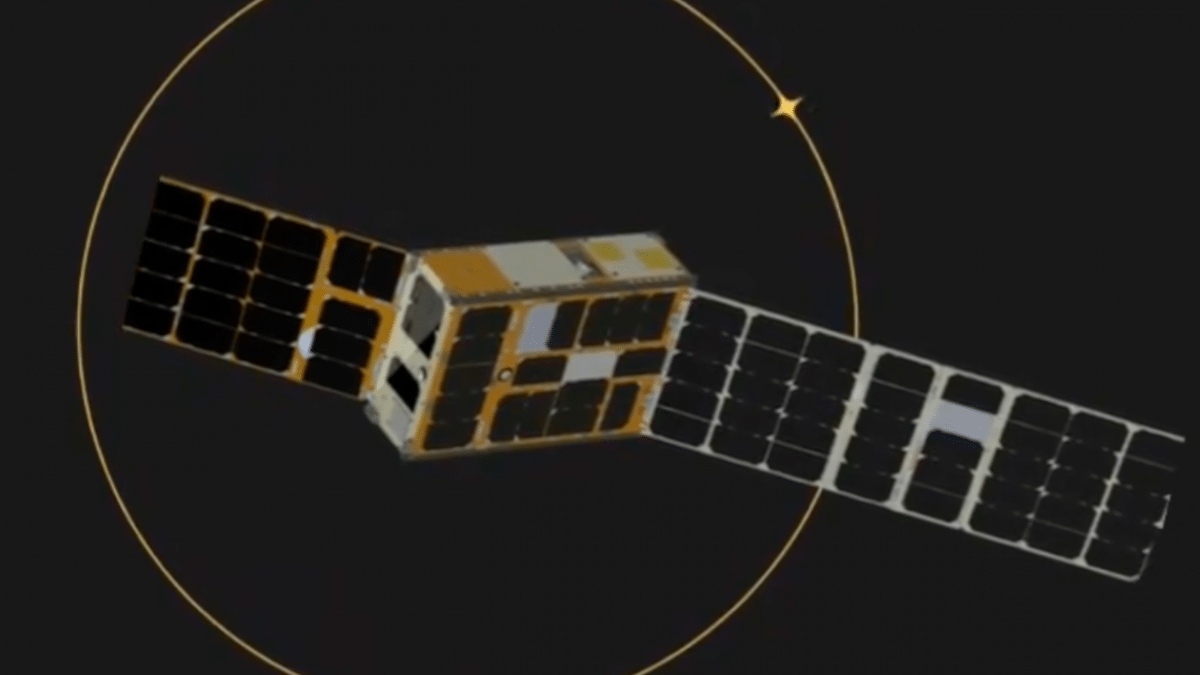Artificial intelligence does not stop at space travel. Last week, the British company Open Cosmos successfully launched its HAMMER satellite into orbit. It contains AI technology that is intended to evaluate and interpret data collected on board using the cameras and sensors. It will also be possible for the first time to control a satellite via a smartphone app.
Advertisement
With a size of just 10 by 35 centimeters and a weight of around two kilograms, HAMMER is a so-called nanosatellite. Its name stands for “Hyperspectral AI for Marine Monitoring and Emergency Response”, and one of the core modules is a hyperspectral camera that can record electromagnetic signals from a large number of closely spaced wavelengths. This makes it possible to track changes in maritime habitats or agriculture, for example.
As part of the OpenConstellation satellite network, HAMMER will, among other things, monitor changes in coastlines in the coming years and, if possible, provide data in real time in the event of natural disasters such as floods or forest fires. But paying customers from industrial agriculture should also be able to access the satellite to monitor and analyze both their infrastructure and yields from space.
Cooperation with AI companies
While Open Cosmos provides the satellite’s “hardware” and ensures its operation, the Irish aerospace company Ubotica takes care of the applications as part of its mission called CogniSAT-6. “CogniSAT-6 will be one of the most connected and intelligent AI-powered missions ever launched,” said Ubotica co-founder Sean Mitchell. There have been various other missions since 2000 that have had forms of artificial intelligence on board, Ubotica engineers said at a conference in October. However, so far no commercial mission has demonstrated the use of neural networks and “on-board decision algorithms”.
CogniSAT-6 is intended to change that. The algorithms are able to immediately evaluate the image data from the camera on board the satellite. Usually, data is first transmitted from the satellite to a ground station, evaluated there and any feedback is then sent back into space. Depending on the amount of data, this can take a few hours. If the data is analyzed directly in space, not only does less data need to be transmitted overall, it can also be analyzed in quasi-real time. Mitchell says CogniSAT-6 can provide useful insights just five minutes after recording.
This makes it possible to react immediately to changes: If the system detects a forest fire or an oil slick, it can decide independently whether it should continue to monitor the affected area. Industrial farms can track the irrigation of their fields in real time and adapt their processes accordingly based on the insights gained. And since HAMMER communicates directly with other satellites in the OpenConstellation network, they can be switched on if necessary and at the same time act as a relay station for data transmission.
Satellite control via app
Last but not least, a special feature is the ability to communicate with the satellite via an app. “Our apps allow users to receive alerts from the satellite and view information for relevant applications, as well as send a message or command back to the satellite,” says Mitchell.
Ubotica’s plans to operate satellite applications via an “app store concept” are also linked to this: customers could receive mobile access to satellites like HAMMER for a specified period of time and use it for their use cases. The combination of fast access and AI-supported software could pave the way for new commercial applications in space travel.
(jl)
To home page
